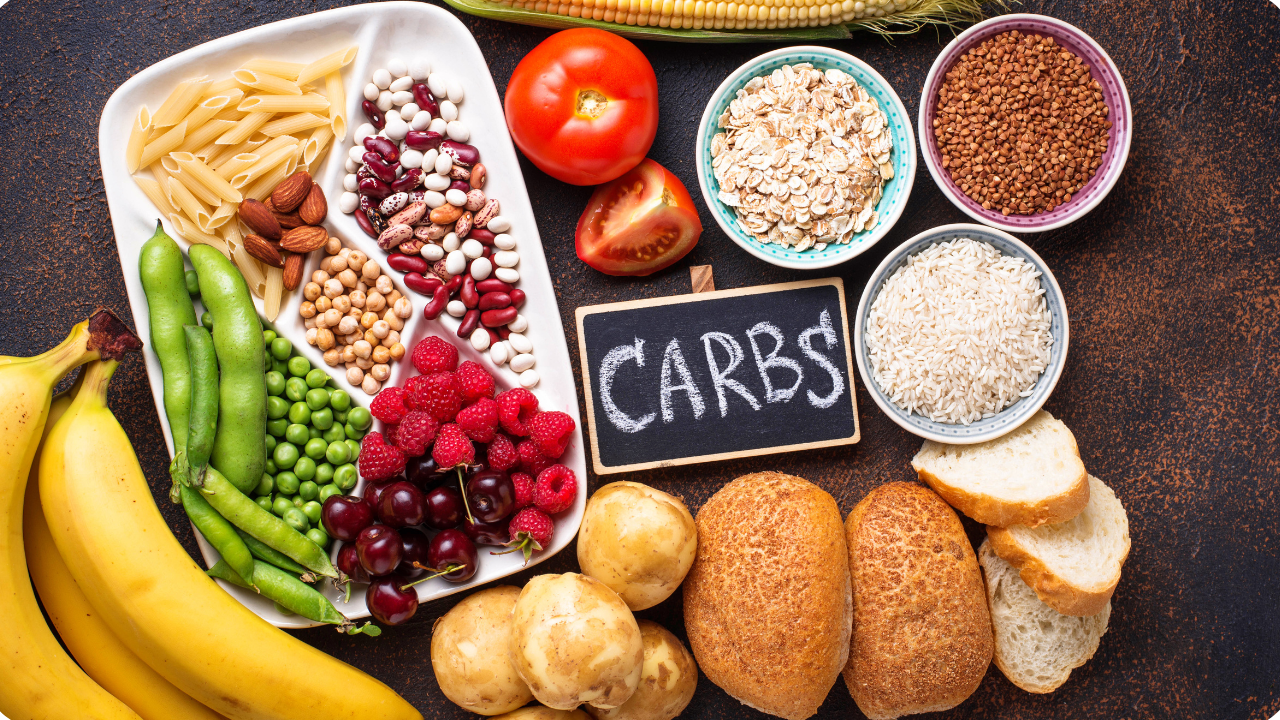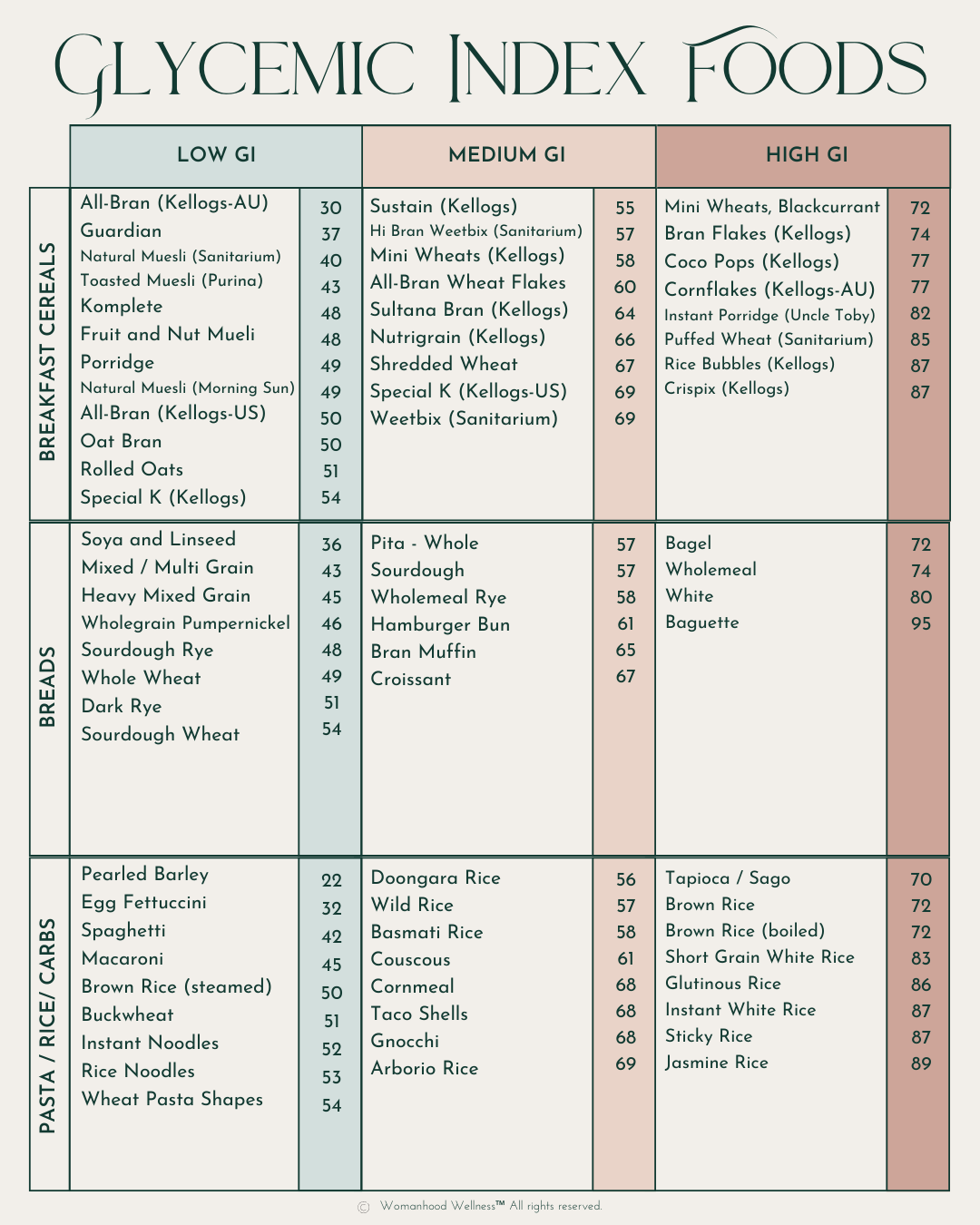
What Is the Glycemic Index?
Jan 16, 2023What is the Glycemic Index?
The glycemic index is a rating system for foods that contain carbohydrates, or sugars. When we eat foods, such as a carbohydrate like bread, pasta, or an apple, those foods are broken down into their smallest forms and we absorb them into our bodies.
These small sugars: glucose, fructose, and galactose enter our bodies and are transported around our bodies through the bloodstream. We call this blood sugar.
We need enough blood sugar to keep our brain functioning and our cells use it for energy, however, if we have too much sugar entering the system, one of two things can happen.
The First: Reactive Hypoglycemia
1) Too much sugar enters the body too quickly which can cause an increase in our hormone insulin. When this happens, the body pulls too much sugar from the bloodstream to put into cells, which causes a DROP in blood sugar.
This is what is happening when someone is hangry, irritable, shaky, weak, or may even pass out. This can happen if they haven't eaten in a while or if they eat a high glycemic index snack or meal without fat or protein.
The Second: Hyperglycemia
2) The other thing that can happen when we have a lot of sugar in our bloodstream is the cells start to become numb to, or unresponsive to insulin, the hormone that puts glucose in our cells.
This leads to chronically HIGH blood sugar, which is what is happening in diabetes, some cases of PCOS, and other metabolic imbalances.
We don't want either scenario happening in our bodies if we want optimal hormonal balance, mood, fertility, and overall health.
So what do we do?
We want to focus on low-glycemic foods as much as possible and limit or avoid high-glycemic foods, especially if they are not eaten with adequate fat or protein, a process that helps to slow down the surge of sugar into our bodies.
For example, instead of having a bagel and cream cheese for breakfast, opt for half the bagel with eggs, spinach, and avocado. The bagel itself is a high glycemic food, but when paired with adequate protein and fat from the eggs and avocado, our blood sugar stays stable.
How do you know if a food is high or low glycemic?
It's easiest to look it up. Each food has been tested on the rate and intensity of its impact on blood sugar in the body.
As a general rule, most vegetables are lower glycemic while more refined carbohydrates such as white rice and white bread, and sugar-containing items like cookies are higher GI.
Some fruits are low GI and some are higher, so it's nice to have an idea of how certain fruits affect the body.
Each food is given a number to designate its Glycemic Index.
Low GI foods are ranked 0-55.
These foods include lentils, almonds, apples, milk, artichoke, asparagus, avocado, bananas, broccoli, Brussel sprouts, cabbage, cashew, cherries, chickpeas, raw carrots, coconut sugar, cucumber, eggs, grapefruit, hummus, mango, olives, oranges, fresh pineapple, plums, prunes, brown basmati rice, spinach, strawberries, sunflower seeds, tomatoes, yams, Ezekiel bread.
Medium GI foods are ranked 56-69.
These foods include cooked beets, whole grain bread, colas, corn, honey, honeydew melons, oatmeal, papaya, potato chips, raisins, long grain rice, rye, sorbet, spelt, and vanilla ice cream.
High GI foods are ranked 70-100.
These foods include bagels, white bread, beer, biscuits, gluten-free bread, cooked carrots, cornflakes, crackers made with white flour, doughnuts, gnocchi, lasagna noodles, molasses, parsnips, plantains, potatoes (flour, starch, mashed, baked, boiled), rice flour, sports drinks, cooked turnips, watermelon.
For a searchable list of the GI index foods, click here.

Is low GI healthy and high GI not healthy?
Not necessarily. The Glycemic Index is a measure of how food impacts glucose and blood sugar. It doesn't mean a low GI food is a healthier choice, or that high GI food is always bad.
For example, watermelon is a 72, meaning it is a high GI food while ice cream is 61, meaning its a medium GI food. Watermelon arguably may be a better choice than ice cream. The key is to make sure you are eating protein and fat with it to help the effects on your blood sugar since watermelon has many nutritional benefits.
(Ice cream is probably lower than watermelon because ice cream has fat and watermelon doesn't).
Many candy bars and baked goods are very high GI, so some foods are high GI and maybe aren't the best for your health.
The glycemic Index is a marker of nutrition to be aware of, but it isn't the only factor to consider in nutrition.

